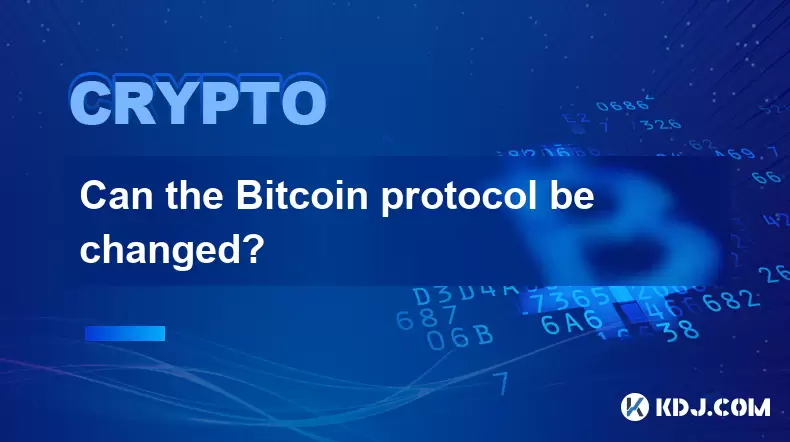-
 bitcoin
bitcoin $109547.008142 USD
0.04% -
 ethereum
ethereum $4011.838726 USD
-0.05% -
 tether
tether $1.000402 USD
-0.01% -
 xrp
xrp $2.798606 USD
0.88% -
 bnb
bnb $970.877944 USD
1.39% -
 solana
solana $202.237275 USD
-0.95% -
 usd-coin
usd-coin $0.999673 USD
0.00% -
 dogecoin
dogecoin $0.229294 USD
-1.15% -
 tron
tron $0.336370 USD
-0.45% -
 cardano
cardano $0.777260 USD
-1.66% -
 hyperliquid
hyperliquid $45.503019 USD
1.73% -
 ethena-usde
ethena-usde $1.000362 USD
0.01% -
 chainlink
chainlink $20.785303 USD
-1.10% -
 avalanche
avalanche $28.755822 USD
-0.11% -
 stellar
stellar $0.358303 USD
-0.48%
Is Bitcoin a solution for inflation?
Bitcoin's fixed supply of 21 million coins makes it a potential inflation hedge, offering scarcity akin to gold, though its volatility and speculative nature pose risks.
Aug 08, 2025 at 04:57 am

Understanding Inflation and Its Impact on Traditional Currencies
Inflation refers to the sustained increase in the price of goods and services over time, which leads to a decline in the purchasing power of fiat currencies such as the US dollar, euro, or yen. Central banks manage inflation through monetary policy, including interest rate adjustments and money supply control. When governments print more money to cover deficits or stimulate economies, the value of existing currency units can erode. This devaluation is especially evident during periods of high inflation or hyperinflation, where citizens may see their savings lose value rapidly. Countries like Venezuela and Zimbabwe have experienced extreme cases, prompting individuals to seek alternative stores of value outside the traditional financial system.
Bitcoin’s Design as a Deflationary Asset
Bitcoin operates on a fundamentally different model compared to fiat currencies. Its protocol enforces a hard cap of 21 million coins, ensuring that no central authority can arbitrarily increase the supply. This scarcity is coded into the blockchain and enforced by consensus rules, making it impossible to inflate the supply beyond this limit. The issuance of new bitcoins follows a predetermined schedule through a process called halving, which occurs approximately every four years and reduces the block reward by 50%. This programmed reduction in supply growth mimics the scarcity of precious metals like gold and contrasts sharply with fiat systems where central banks can expand the money supply at will.
Because of this built-in scarcity, many investors view Bitcoin as digital gold—a long-term store of value resistant to inflationary pressures. Unlike traditional assets that can be diluted through monetary expansion, Bitcoin’s supply remains fixed, potentially preserving value over time even as fiat currencies depreciate.
Bitcoin’s Historical Performance During Inflationary Periods
During periods of elevated inflation, particularly following global economic disruptions such as the COVID-19 pandemic, Bitcoin has attracted attention as a potential hedge. In 2021 and 2022, as central banks injected trillions into economies through quantitative easing, inflation rates surged in many developed nations. During this time, Bitcoin’s price experienced significant volatility, with notable rallies followed by corrections. While some investors flocked to Bitcoin as a safeguard, its price did not consistently rise in lockstep with inflation metrics like the Consumer Price Index (CPI).
This inconsistency highlights an important distinction: Bitcoin may possess structural features that resist inflation, but its short-term price behavior is influenced by multiple factors, including market sentiment, regulatory news, macroeconomic trends, and speculative trading. Therefore, while its design supports long-term value preservation, its current market dynamics do not guarantee immediate protection during inflationary spikes.
How to Use Bitcoin as an Inflation Hedge: Practical Steps
For individuals seeking to use Bitcoin as a potential inflation hedge, the process involves careful planning and execution. The following steps outline how to begin:
- Choose a reputable cryptocurrency exchange such as Coinbase, Kraken, or Binance. Ensure the platform supports your local currency and offers strong security measures like two-factor authentication (2FA) and cold storage for assets.
- Complete the identity verification process (KYC) required by the exchange. This typically involves uploading a government-issued ID and proof of address.
- Deposit funds using a bank transfer, debit card, or other supported method. Be mindful of transaction fees and processing times, which vary by payment type.
- Purchase Bitcoin directly through the exchange interface. Select the amount you wish to buy and confirm the transaction. The Bitcoin will be stored in your exchange wallet initially.
- Transfer your Bitcoin to a secure personal wallet for long-term holding. Options include hardware wallets like Ledger or Trezor, or software wallets with strong encryption. This step is critical to maintain full control over your private keys and reduce reliance on third parties.
- Enable additional security features such as multi-signature authentication or passphrase protection on your wallet to enhance asset safety.
Holding Bitcoin in a self-custodied wallet aligns with the principle of 'be your own bank', minimizing counterparty risk and reinforcing its role as an independent store of value.
Limitations and Risks of Relying on Bitcoin for Inflation Protection
Despite its theoretical advantages, Bitcoin is not a guaranteed solution for inflation. Its high volatility means that short-term price swings can result in substantial losses, even if the long-term trend is upward. For example, Bitcoin dropped from nearly $69,000 in November 2021 to below $16,000 in late 2022, a decline of over 75%. Such fluctuations can undermine its effectiveness as a stable store of value during economic uncertainty.
Additionally, Bitcoin’s market liquidity and adoption are still evolving. Unlike government-backed currencies or widely accepted commodities, Bitcoin’s acceptance as a medium of exchange remains limited. Regulatory changes in major economies can also impact its usability and value. For instance, a country banning cryptocurrency trading or mining can trigger sharp price declines.
Another consideration is accessibility and technical barriers. Not all individuals have reliable internet access, digital literacy, or the ability to securely manage private keys. These factors limit Bitcoin’s utility as a universal inflation hedge, especially in regions most affected by currency devaluation.
Comparing Bitcoin to Other Inflation-Resistant Assets
Bitcoin is often compared to traditional inflation-resistant assets like gold, real estate, and Treasury Inflation-Protected Securities (TIPS). Gold has served as a store of value for centuries due to its scarcity and durability. Real estate provides tangible utility and income generation, while TIPS are government bonds indexed to inflation. Each of these assets has trade-offs in terms of liquidity, storage costs, and accessibility.
Bitcoin offers advantages in portability, divisibility, and ease of transfer across borders. It can be sent globally in minutes without intermediaries, unlike physical gold or real estate, which require logistics and legal processes. However, unlike TIPS, Bitcoin does not offer guaranteed returns or income. Its value is purely speculative, driven by supply-demand dynamics and market confidence.
Investors often adopt a diversified approach, combining Bitcoin with other assets to balance risk. The decision to include Bitcoin in an inflation-resistant portfolio depends on risk tolerance, investment horizon, and belief in the long-term viability of decentralized digital currencies.
Frequently Asked Questions
Can Bitcoin lose value even during high inflation?Yes. Although inflation may increase demand for alternative stores of value, Bitcoin’s price is influenced by global market forces. Events such as regulatory crackdowns, security breaches, or macroeconomic shifts can cause price declines regardless of inflation levels.
Is holding Bitcoin safer than keeping money in a savings account during inflation?Not necessarily. While savings accounts may offer low interest that fails to match inflation, they are insured and stable. Bitcoin offers potential for higher returns but comes with significant price volatility and no insurance protection. The safety depends on individual risk assessment and technical capability.
Does Bitcoin generate any yield to offset inflation?Bitcoin itself does not produce income like interest or dividends. However, some platforms allow users to stake or lend Bitcoin through third-party services to earn yield. These methods carry counterparty and smart contract risks and are not inherent to Bitcoin’s protocol.
How does Bitcoin’s supply cap prevent inflation?The 21 million coin limit ensures no entity can create additional bitcoins arbitrarily. This fixed supply contrasts with fiat systems where central banks can increase money supply, leading to currency devaluation. Bitcoin’s scarcity is enforced by decentralized consensus, making supply inflation impossible under current rules.
Disclaimer:info@kdj.com
The information provided is not trading advice. kdj.com does not assume any responsibility for any investments made based on the information provided in this article. Cryptocurrencies are highly volatile and it is highly recommended that you invest with caution after thorough research!
If you believe that the content used on this website infringes your copyright, please contact us immediately (info@kdj.com) and we will delete it promptly.
- BlockchainFX, Binance Coin, Cardano: Decoding the Crypto Landscape in 2025
- 2025-09-29 04:45:12
- Cathie Wood, Bitcoin, and the Future of Monetary Standards: A New York Perspective
- 2025-09-29 04:25:17
- Crypto Presales Under the Microscope: BlockDAG, HYPER, and the Hunt for the Next Big Thing
- 2025-09-29 04:25:17
- Ethereum Bulls Eye $4,000: Is the Rally Sustainable?
- 2025-09-29 05:05:14
- Aster Price Surge: Bullish Breakout or Falling Wedge Fiasco?
- 2025-09-29 04:45:12
- Aptos Price Prediction: Will the Velociraptor Upgrade Trigger a Rally?
- 2025-09-29 04:50:01
Related knowledge

Why is Bitcoin considered a revolutionary technology?
Aug 12,2025 at 08:29pm
Decentralization and the Elimination of Central AuthoritiesThe core innovation behind Bitcoin lies in its decentralized architecture, which fundamenta...

Why is Bitcoin considered a revolutionary technology?
Aug 10,2025 at 07:42pm
Decentralized Architecture and Trustless TransactionsBitcoin is considered revolutionary because it introduced a decentralized architecture that opera...

What are the key features of Bitcoin?
Aug 10,2025 at 02:50am
Decentralization and Peer-to-Peer NetworkOne of the most defining characteristics of Bitcoin is its decentralized nature. Unlike traditional financial...

Can the Bitcoin protocol be changed?
Aug 07,2025 at 01:16pm
Understanding the Bitcoin ProtocolThe Bitcoin protocol is the foundational set of rules that govern how the Bitcoin network operates. It defines every...

Can the Bitcoin protocol be changed?
Aug 11,2025 at 01:01am
Understanding the Bitcoin Protocol StructureThe Bitcoin protocol is the foundational set of rules that govern how the Bitcoin network operates. These ...

What happens to Bitcoin transactions once they are confirmed?
Aug 09,2025 at 05:22am
Understanding Bitcoin Transaction ConfirmationWhen a Bitcoin transaction is initiated, it is broadcast to the network and placed in a pool of unconfir...

Why is Bitcoin considered a revolutionary technology?
Aug 12,2025 at 08:29pm
Decentralization and the Elimination of Central AuthoritiesThe core innovation behind Bitcoin lies in its decentralized architecture, which fundamenta...

Why is Bitcoin considered a revolutionary technology?
Aug 10,2025 at 07:42pm
Decentralized Architecture and Trustless TransactionsBitcoin is considered revolutionary because it introduced a decentralized architecture that opera...

What are the key features of Bitcoin?
Aug 10,2025 at 02:50am
Decentralization and Peer-to-Peer NetworkOne of the most defining characteristics of Bitcoin is its decentralized nature. Unlike traditional financial...

Can the Bitcoin protocol be changed?
Aug 07,2025 at 01:16pm
Understanding the Bitcoin ProtocolThe Bitcoin protocol is the foundational set of rules that govern how the Bitcoin network operates. It defines every...

Can the Bitcoin protocol be changed?
Aug 11,2025 at 01:01am
Understanding the Bitcoin Protocol StructureThe Bitcoin protocol is the foundational set of rules that govern how the Bitcoin network operates. These ...

What happens to Bitcoin transactions once they are confirmed?
Aug 09,2025 at 05:22am
Understanding Bitcoin Transaction ConfirmationWhen a Bitcoin transaction is initiated, it is broadcast to the network and placed in a pool of unconfir...
See all articles









































































